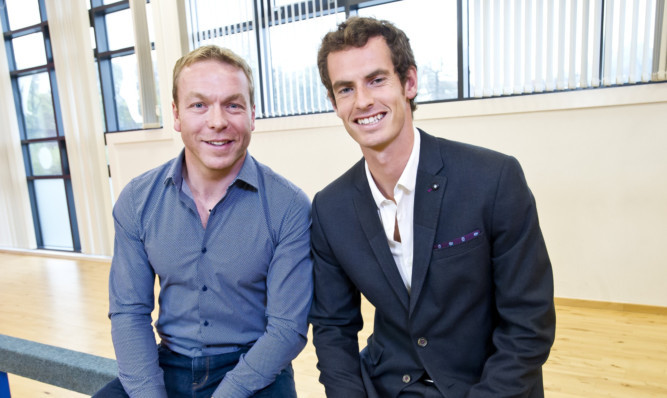Scottish Football and Rugby should look to Andy Murray and Sir Chris Hoy if they want to succeed at top level.
Both men have beaten the best on the planet, with ferocious determination and ability taking them to the very top.
In football and rugby there is nothing in our gene pool or water supply stopping us doing the same.
Yet, Gordon Strachan admitted we don’t have one world class player, and failure to qualify for Euro 2016 is evidence of that.
In the rugby world cup, defeat to South Africa showed that we struggle to trouble the top nations.
There is a huge difference between producing one top class athlete in the so called minority sports and entire teams full of them. When though, did we last produce even one world class football or rugby player?
The dedication, effort and commitment required to become a professional athlete means that those reaching that level are in a very small and select group.
To achieve on the world stage though, requires an extra set of qualities above and beyond the everyday performer.
Finding the secrets of success of Hoy and Murray and transplanting it to our football and rugby players would be a huge boost for both those sports and also the nation.
The much vaunted mantra of Dave Brailsford, who transformed British cycling into the best in the world, was ‘the aggregation of marginal gains’.
His theory, subsequently proven, that miniscule improvement in each of the core elements of a discipline, added together, could make the difference between success and failure at the very top level.
Athletes like Hoy and Murray though, also put in huge numbers of training hours. From a very early age, extensive training programmes where energy sapping routines were drilled into them over and over again were a draining daily routine.
Those grinding hours of constant practice, much more intensive and lengthy than that expected of our footballers or rugby stars, have been needed for both men to climb to the rarefied summit of world achievement.
Can that dedication and that Spartan training regime be replicated in our football and rugby?
Is either of those two sports capable of embracing the dedication and discipline required, to push its performers into the very top bracket of sporting achievement?
A major issue is that the level of training and coaching required reaching world elite level starts at a very early age. It also requires parental sacrifice and a fairly hefty financial input.
Mainly though, it demands an inner drive and ambition to be absolutely the best. Not everyone in sport, even blessed with natural talent, can meet those demands.
There is no disgrace in not reaching world class level in any sport. Not everyone can reach those dizzy heights.
If we truly wish to match the best in both football and rugby though, there are lessons to be learned from the examples of both Hoy and Murray.
The old argument that our population size is a barrier has been exposed as a myth; other small nations have proven that.
The real barriers are about ambition, determination and desire.
